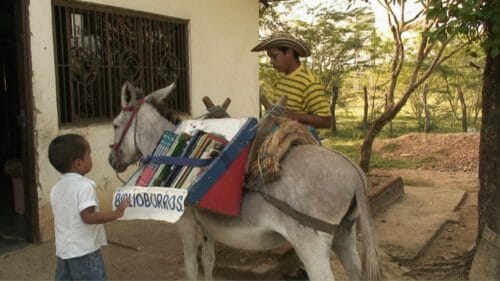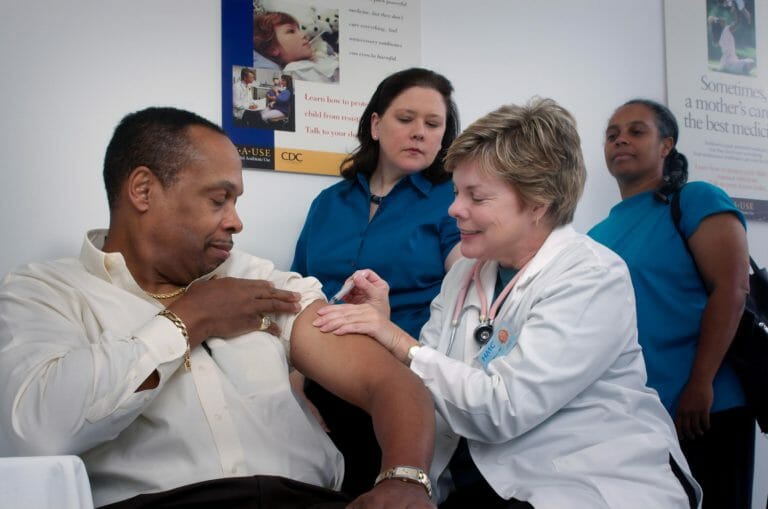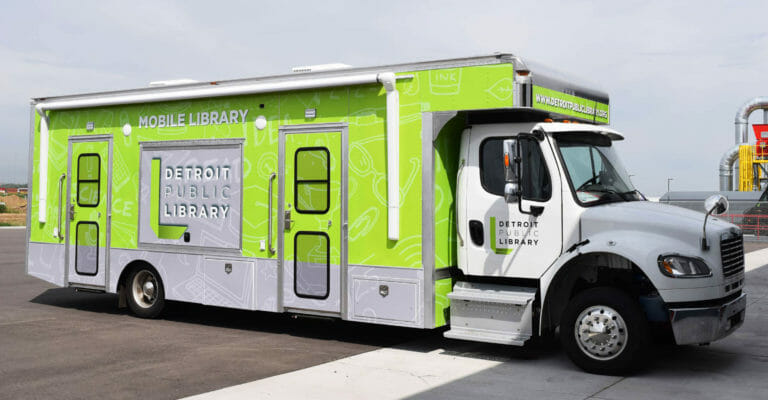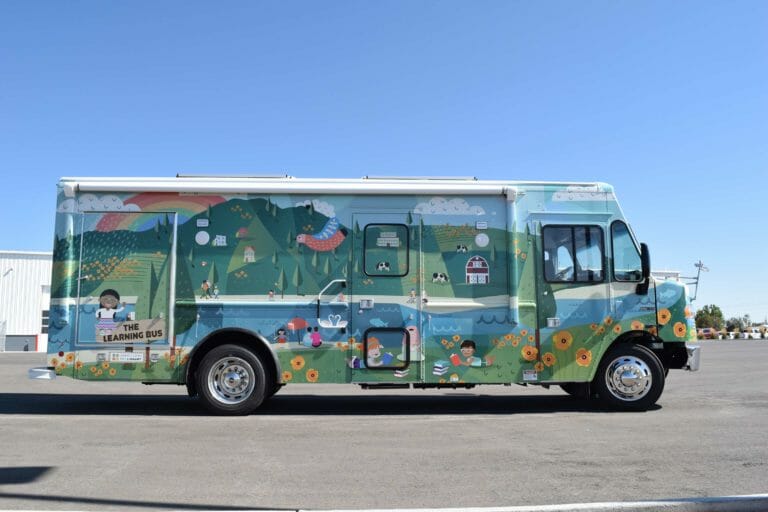Community Outreach
Bookmobiles of The Past and Future
March 18, 2021

DID YOU KNOW the original bookmobile dates back over a century and a half?
Back in 1857, a fellow named George Moore in England created a “perambulating library” to “diffuse good literature among the rural population” (The British Workman, 1857). This little mobile library resembled a taller version of a wheelbarrow with a box on top full of books. The perambulating library progressed to a horse-drawn vehicle which likely was a bit easier on the librarian’s back – as we know, carrying a load of books can be a burden (another great reason to install a wheelchair lift!).
Nearly a decade later the idea made its way to the United States. In 1904, the local library in Chester County, SC drove a mule-drawn wagon to deliver literature to its rural areas (Chester County Free Public Library, 2010). This idea began spreading around the east coast of the United States as many libraries realized new literature wasn’t reaching the rural and remote homes.
As motorized transport began growing, a librarian out of Trenton, NJ began driving her Ford Model T to bring books to rural New Jersey areas. However, once the Great Depression hit, this goal was not as easy to achieve so the Pack Horse Library Project kicked into gear. A group of “book women” worked for $28 a month delivering books throughout the Appalachian Mountains via horses and mules (Crawford, 1995). With 31% of the area being illiterate, these magnificent women didn’t just deliver the books, but read to those they visited as well.
Years later, in Fairfax County, VA, the Works Progress Administration loaned a truck to launch a county-wide literacy outreach service. Following, a team called “Library in Action,” who was run by interracial staff, went to underserved communities to deliver books to young people of color (Attig, 2012).
Today bookmobiles have truly taken off, coming in all shapes and sizes, from book bikes, to pop-up trucks, to huge 36+’ coaches! Although motorized vehicles have become the norm, especially in the United States, throughout the world people have unique ways of delivering literacy resources to their communities. For example:
- Kenya has the Camel Mobile Library Service who uses over 12 camels to deliver books in English, Somali, and Swahili
- Thailand has “bookmobiles” delivering books via elephant, boat, and train
- Norway has the “Epos,” a library ship that is in commission 126 days of the year
- Colombia is visited by the “Biblioburro,” a four-hooved traveling library on the backs of two donkeys named Alfa and Beto
You can buy books about these unique libraries for YOUR library here:
Waiting for the Biblioburro
My Librarian is a Camel
That Book Woman
Miss Dorothy and Her Bookmobile
It is humbling to know that over 164+ years, many like-minded people have had and continue to pursue a goal to bring the joy of reading to all people through whatever means necessary. Bookmobiles have come a long way, and we have had the privilege of building some spectacular bookmobiles that have upgrades like smart-TVs, PA systems, color changing LED lights, benches and tables, and so much more.
At Summit Bodyworks, we are always inspired by the bookmobile stories that our customers share with us! If you have any sweet, silly, inspiring, or all-around-feel-good stories to share with us, please email them to emily.baker@summitbodyworks.com!
References
Attig, Derek (12 April 2012). “National Bookmobile Day: Aggregation Edition”. HASTAC.
Crawford, Byron (December 17, 1995). “Times Were Tough, But the Book Woman Was Tougher”. The Courier-Journal. Retrieved September 1, 2017 – via Newspapers.com.
“History”. Chester County Free Public Library. Retrieved 1 May 2010.
“Perambulating Library”. The British Workman. 1 February 1857.


